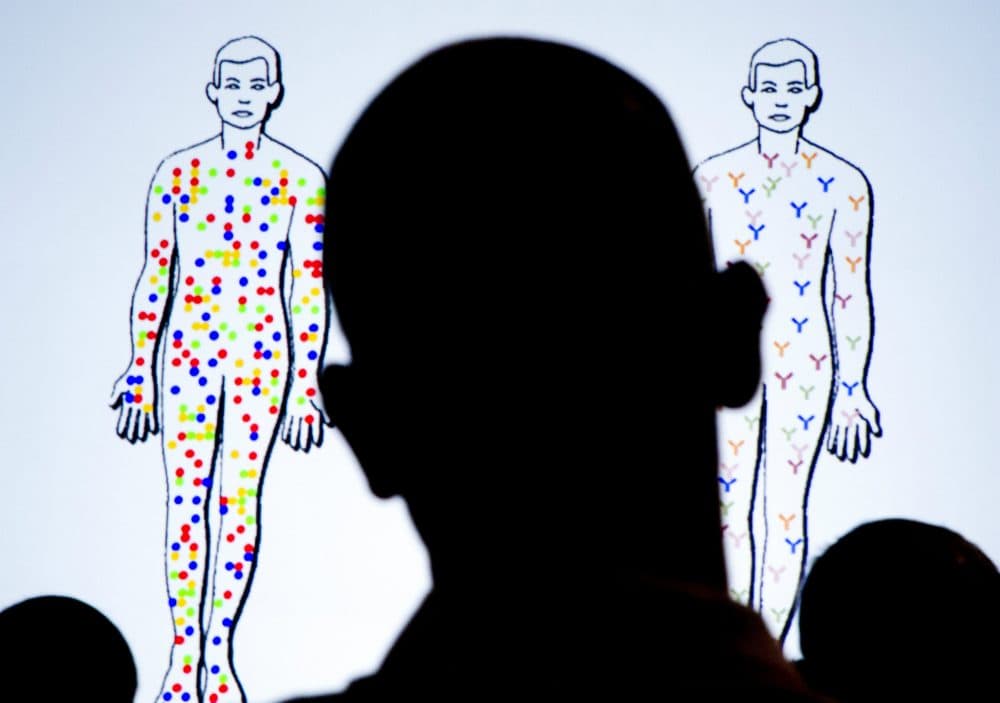Advertisement
Aging With HIV/AIDS: The Progress Made, And The Challenges That Remain

The Museum of Modern Art recently hosted a special 25th anniversary screening of the film “Madonna: Truth or Dare,” which documented Madge’s 1990 blockbuster Blond Ambition World Tour. The film was a sensation not just because it peeked into the rarefied world of a global superstar — long before social media and reality TV made such voyeurism humdrum — but also for its portrayal of her dancers, a troupe of seven young men, six of whom were gay. The gay dancers’ confident embrace of their sexuality, their exquisite talent and charisma, and their physical beauty captivated and empowered a generation of young gay men struggling with self-acceptance in the midst of AIDS hysteria to come out and be proud.
Despite its title, though, the film didn’t reveal the whole truth of the dancers’ lives. Two of them, Salim “Slam” Gauwloos and Carlton Wilborn, were hiding the fact that they were HIV positive. Both have since said that they were too steeped in denial, shame and fear of stigma to share their status at the time.
Gauwloos was diagnosed with HIV in 1987, but paralyzed with shame, he did not seek treatment until 10 years later, when he was hospitalized with pneumocystis pneumonia. Now 47, he did not publicly reveal his status until the filming of “Strike A Pose” a new documentary that catches up with six of the seven dancers to examine their post-“Truth or Dare” lives (dancer Gabriel Trupin died of AIDS in 1995).
Wilborn was diagnosed in 1985 but did not disclose his status until publication of his 2007 memoir. In a recent interview, the 52-year-old said the difference between life circa “Truth or Dare” and his life as portrayed in “Strike a Pose,” is “that I’m free now. … the hiding and self-hatred — it’s not happening now, and I get to be in these moments of goodness and be available for it.”
It’s heartening to see these men back in the spotlight as long-term HIV survivors helping others break through stigma and shame. Their stories are particularly resonant as we mark National HIV/AIDS and Aging Awareness Day on Sunday, September 18. Thanks to improvements in treatment and care, half of those living with HIV in the U.S. are, like Wilborn, age 50 or older. That people with HIV and AIDS are living longer is certainly heartening. But as people with HIV age, they face unique and complex risks that health care providers must become better prepared to address.
Older adults who have been living with HIV for decades and taking antiretroviral drugs often experience the early onset of other chronic diseases. There “comorbid conditions,” as they are known, include liver disease, heart disease and cancer. HIV medications and the virus itself may also contribute to the early onset of cognitive impairment like dementia and put older folks at higher risk for depression.
...as people with HIV age, they face unique and complex risks that health care providers must become better prepared to address.
In the brief, “Strategies to Improve the Health of Older Adults Living With HIV,” The National Center for Innovation in HIV Care, a project of The Fenway Institute, lays out steps that health care providers should take to provide effective care for older people living with HIV.
Medical and service providers should be trained in how to provide “culturally competent care” — that is, care that takes into account the unique issues facing older people living with HIV and is affirming and nonjudgmental. Because half to two-thirds of people with HIV in the U.S. are gay and bisexual men or transgender women, providers must be trained to care for these populations as well.
Sexual health education and HIV prevention for older adults is also critically important. Many assume incorrectly that older individuals aren’t sexually active, which contributes to lower rates of HIV testing and a belief that they do not need sexual health education.
Gaulwoos and Wilborn are a testament to the resilience and strength of long-term survivors of HIV. But, as each has learned, they can’t survive on their own. They, and hundreds of thousands of others like them in the U.S., need access to quality health care from providers who understand their unique needs and health risks and networks of support to help them face the challenges of living with HIV. Surely, that’s a truth we can all live with.
Editor's note: Sean Cahill co-authored the "Strategies to Improve the Health of Older Adults Living With HIV" brief, referenced above.

